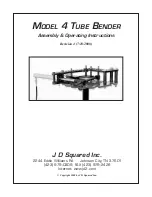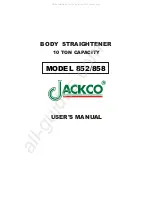
Maintenance
29
Changing the Oil Filter
Replace the oil filter every 200 hours or every other
oil change.
Note:
Change the oil filter more frequently
when operating conditions are
extremely hot, dusty, or sandy.
1.
Drain the oil from the engine; refer to Changing
the Oil, page 28.
2.
Place a shallow pan or rag under the filter to
catch oil.
3.
Remove the old filter (Fig. 28) and wipe the
surface of the filter adapter gasket.
m–1256
1
Figure 28
1.
Oil filter
4.
Pour new oil of the proper type through the
center hole of the filter. Stop pouring when the
oil reaches the bottom of the threads.
5.
Allow a minute or two for the oil to be absorbed
by filter material, then pour off the excess oil.
6.
Apply a thin coat of new oil to the rubber gasket
on the replacement filter.
7.
Install the replacement oil filter to the filter
adapter. Turn the oil filter clockwise until the
rubber gasket contacts the filter adapter, then
tighten the filter an additional 1/2 turn.
8.
Fill the crankcase with the proper type of new
oil; refer to Changing the Oil, page 28.
Servicing the Tracks
Check the tracks for excessive wear and clean them
periodically. If the tracks are worn, replace them.
Cleaning the Tracks
1.
With a bucket on the loader arms, lower the
bucket to the ground so that the front of the
traction unit lifts off of the ground a few inches.
2.
Stop the engine, and remove the key.
3.
Using a water hose or pressure washer, remove
dirt from each track system.
IMPORTANT: Ensure that you fully clean
the road wheels, the tension wheel, and the
drive sprocket (Fig. 29). The road wheels
should rotate freely when clean.
m–4736
1
2
3
4
Figure 29
1.
Track
2.
Tension wheel
3.
Road wheels
4.
Drive Sprocket
Replacing the Tracks
When the tracks are badly worn, replace them.
1.
Lower the loader arms, stop the engine, and
remove the key.
2.
Lift/support the side of the unit to be worked on
so that the track is three to four inches (7.6 to 10
cm.) off of the ground.
Содержание Dingo TX 22306
Страница 7: ...Safety 5 Slope Chart...














































